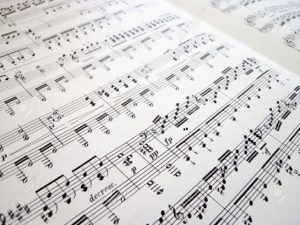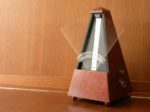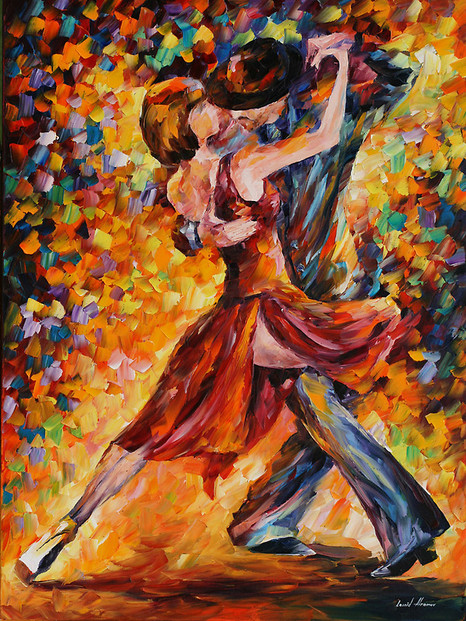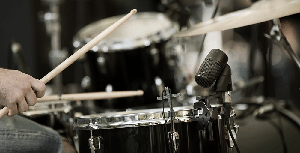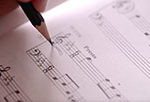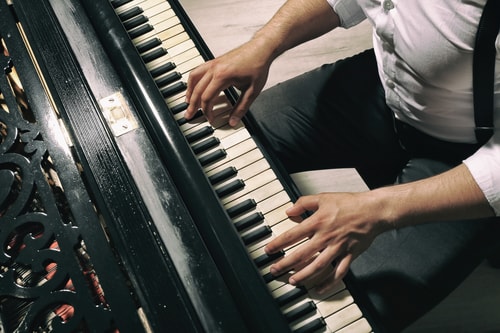
Approaching jazz as a classical pianist can be challenging. If you’re interested in learning about jazz and how to play jazz piano, you’ve come to the right place! In this article, I share my experience of how I began to explore jazz and share tips with you on how you can get started and be successful. The guidance will include information on topics such as learning by ear, learning improvisation, and practicing the jazz feel. I hope this advice will help make your learning process easier!
How I started to learn jazz
My first experiences with jazz piano started well after I began my classical training. I started to learn piano when I was four years old. I had often heard jazz on the radio while I grew up in Taiwan and I enjoyed the tunes. However, I never had any formal training in jazz and never knew the best way to approach it, either for listening or for actual improvisation. I assumed that all the musicians just improvise and play whatever they like; however, there is actually a structure to the tune. I realized this after I started my Master’s degree in Piano Performance at Indiana University, when I took a jazz improvisation and theory class. These two courses definitely helped me understand jazz and how to approach jazz as a complete beginner. The tips and suggestions that I provide here, beginning with a whole new approach of learning new music by listening to it first, come from what I learned while taking these two courses.
Learning by ear
1. Listen to Recordings
During the improvisation class, the professor would often play on the piano and have us listen and repeat what he played on our own instrument, which is very different from learning classical piano. In classical piano, we look at the scores to learn a new piece. However in jazz, listening contains most of the learning process. When learning a new jazz tune, they turn to recordings first.
⟴ Recording Suggestions
-Cannonball Adderley: “Somethin’ Else” (Hank Jones on Piano)
-Miles Davis: “Kind of Blue” (Bill Evans/ Wynton Kelly on Piano)
-Miles Davis: “Cookin” (Red Garland on Piano)
-Sonny Rollins: “Saxophone Colossus” (Tommy Flanagan on Piano)
-Wes Montgomery with Wynton Kelly: “Smokin At the Half Note” (Wynton Kelly on Piano)
-Oscar Peterson: “We Got Requests” (Oscar Peterson on Piano)
-Bill Evans: “Waltz for Debby” (Bill Evans on Piano)
-Bill Evans: “Portrait in Jazz” (Bill Evans on Piano)
-John Coltrane: “Blue Train” (Kenny Drew on Piano)
-John Coltrane: “Giant Steps” (Tommy Flanagan/Wynton Kelly/Cedar Walton on Piano)
-Keith Jarrett: “Tokyo’96” (Keith Jarrett on Piano)
2. Learn about the musicians and the styles of the recordings
The albums that I chose are just a small selection. There are a lot of great jazz albums that you can find out there. I picked these albums because these jazz musicians have had a huge influence on the musical style of jazz. For example, Miles Davis (trumpeter, composer and bandleader), was at the forefront of a number of major stylistic developments in jazz. Additionally, Bill Evans was one of the greatest jazz pianists and was known for his use of impressionist harmony. Having started as a classical pianist, Evans’ style was influenced by composers such as Debussy, Ravel, and Milhaud.
When you listen to these recordings, make sure you also read the liner notes and the personnel of the band/group/combo, so that you know whose playing you are listening to. You will become more familiar with each of their unique musical styles and their approach to improvisation, which will help you to develop your own style.
Start learning the important jazz standards
3. Pick a tune!
The other reason I chose these albums is that they include some important jazz standards (jazz standards are tunes that are widely known, performed, and recorded by jazz musicians), which people often call to play during jam sessions. These tunes are good for beginners to start off learning. For example: “Autumn Leaves” (from the album Somethin Else), “So What” and “Freddie Freeloader” (from the album Kind of Blue), “St. Thomas” (from album Saxophone Colossus), “Misty” (from the album Smokin at the Halfnote), “What is this Thing Called Love” and “Someday My Prince Will Come” (from the album Portrait in Jazz), “Mr. PC” (from the album Giant Steps).
If you have no preference for which album or tune to begin with, I would recommend you to start with one of these important jazz standards.
4. Sing along
You might think that having the music playing as background while you are doing something else is an effective way to listen, however, this is not the case (I used to do that all the time). For you to really understand what these musicians are doing and to learn jazz, you need to concentrate while you are listening to these albums. Pay close attention to the feel, the jazz idioms, and languages that these musicians use during their solos.
I also suggest that you pick one or two tunes every week, that you enjoy listening to, and repeat that tune over and over again, until the melody is in your head and that you are able to sing it. When I asked my jazz piano professor John “Chip” Stephens, “What is the secret of learning jazz?,” besides telling me to listen to jazz as much as you can, he told me that singing is another important thing to do, even if it is just singing in your head. While you sing, try to imitate the accents and the rhythmic feel of each tune.
5. Play it on your instrument
After you get comfortable singing the melody, try to play it on your instrument. Start slowly when you first begin, then play with the recording and copy the inflections, articulations, phrasing, etc.
6. Understand the theory
The next step is to learn the chords and scales of the tune. As for this part, here is when the theory comes in. I believe that it is very important to at least learn basic jazz theory in order to understand how the tune is structured and how to improvise on it.
Try to read the lead sheets (Figure 1) first and figure out what the chord symbols mean. Each chord corresponds to a scale that is the most suitable to play. For example, a C major chord corresponds to the C major scale. The scale that you play is mainly the resource that you improvise on,then focus on the chord tones. For example, focus on C, E, G, B, D (1,3,5,7,9) during the C major 9 chord. Play this a couple of times: with your left hand playing the chord and your right hand outlining the chord tones; try to get the sound in your ear. As you see from the lead sheet, the chord symbol shows mostly 7th chords (E7, A7). The lead sheets are just to provide the outline of the chord progression. When you play the chords, you can add more colors by extending the chord to the 11th or even the 13th (As you can see from the lead sheets D13). These extensions are one of the most crucial elements in creating the rich jazz sound. After you figure out the chord scale relationship and chord tones, start to combine scales and chord tones together to create a natural melodic line. For example, on the C6 chord, you can play C -E-G-B-D- C-B-A-G. It would be helpful if you are also singing the original melody in your head so that it serves as a frame for your improvisation.
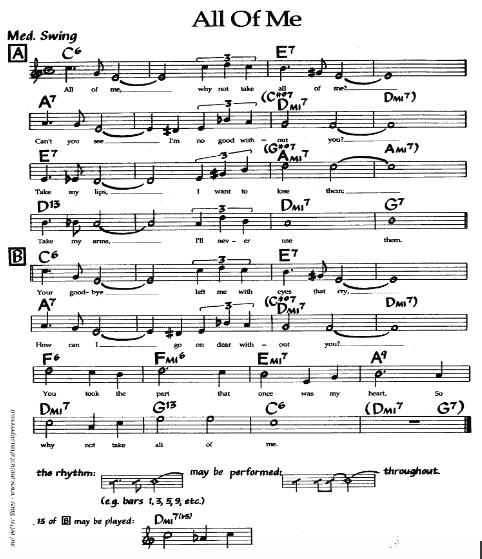
⟴ Play along with the backing track
There is an app that many people use called “iReal Pro.” I highly recommend that you download this app. It contains the chord changes of most of the important jazz standards. Thus, you can practice along with it. It is a play-along app that has the drum, bass, and piano as a backing track. You can mute any of the instruments, transpose it into all 12 keys, adjust the tempo, and loop as many times you want. So basically you have the whole jazz combo to practice with. This is not to say that you don’t need to go to the jam session. Playing with real people is still very different from playing with the backing track. In addition, this app doesn’t have the melody, only the chord changes, you will either need to learn the melody by ear or find the lead sheets in one of the Fake books. (A fake book is a collection of musical lead sheets that contains the melody line, basic chord changes, and sometimes the lyrics).
After all of this listening and practicing, you might still feel awkward playing jazz, like the feel is not quite right. It doesn’t sound like jazz, it feels like you are just playing an etude. So what went wrong? Following are some of the challenges that I found most classical pianists encounter.
The challenges that most classical pianists encounter
⟴ Time and feel
One of the problems many classical musicians face when learning jazz is that the timing and feeling is not accurate. Because of my classical training background, my rhythm and timing is often too straightforward (on the beat). For jazz, the place where you put the accent will create a big difference to the feel of the tune. Thus, even if you play all the notes correctly, if the timing and feeling is not right, the whole tune would not sound like jazz.
Being a jazz pianist, you not only need to improvise during your solo, but you also need to be able to comp (the jazz term for accompanying) yourself and others. If your timing and feeling is not right, the people who are soloing will not be able to improvise comfortably. Thus, providing great timing is very important as a jazz pianist. Here are some ways that I find helpful to improve timing:
⟴Tips to improve your feel
1. Focus on listening to the comping in the recordings. (It may be helpful to use an app that can slow down the songs for you to listen carefully to the detail). Then imitate the rhythmic patterns the pianist uses. Later on, closely observe how the pianist interacts with the soloist rhythmically.
2. Record yourself while playing on the piano. Sometimes, I thought that I was creating a swinging feel; however, when I listened to myself on the recording, I realized that I wasn’t really doing it! So recording yourself can help you listen more closely, just like how you record yourself playing a classical piece.
3. Practice your scales by emphasizing the upbeat (2nd and 4th beat). Try to exaggerate the accent of 2nd and 4th beat while practicing your scales. It is also helpful if you have your metronome clicking on the 2nd and 4th beat. This practice will help you get more used to the swinging feel.
⟴ Improvisation
As classically trained pianists, we are used to reading scores. Improvisation is something that took me a while to feel comfortable doing. I remember the first few jazz piano classes, I was having a hard time improvising something that sounds like jazz. I was really focused on not playing the wrong notes and was trying to make sure that I was playing the right scale on the right chord. Even though theory is something that you should know, sometimes while you are improvising, you should try to forget about the rules and have your ears guide you. Here are some ways to help improve your ear and improvisation:
⟴ Tips to improve your improvisation
1. Pick one or two solos from the recording and sing along. Most of the time the solos are really fast, so you might need to use the slowing down app to help you with the notes and rhythm. You might also need to repeat this process multiple times in order to be able to sing at the same tempo as the recording. At this point you should have the solo memorized. This practice helps you to develop your jazz ear. By working through this process, once you started to solo, you will be surprised that some of the fragments from the solo you learned will appear in your solo.
2. Try to think of it as a variation. Like I mentioned before, use the melody as your frame and make a few changes to it.
3. Sing your solo first and then play it on the piano. Sometimes we tend to limit ourselves on our instrument and think too much when playing. Singing it first will give you much more freedom and you will be able to hear it in your head first, which will give you more preparation for your solo.
It took me awhile to finally feel comfortable playing jazz. It was very frustrating for me at first. One of the most effective practice strategies for me is listening to the recordings over and over again, especially memorizing a couple of solos. Eventually, I was able to hear the lines that I would like to play while improvising. Being classical pianists, we are able to play the notes accurately with great tone quality. The most important thing as we learn this new style is about the timing and using the jazz language.
I hope you will find these tips helpful and keep on swinging!!
Ready to learn music?
Start learning with our 30-day free trial! Try our music courses!
About Liberty Park Music
LPM is an online music school. We teach a variety of instruments and styles, including classical and jazz guitar, piano, drums, and music theory. We offer high-quality music lessons designed by accredited teachers from around the world. Our growing database of over 350 lessons come with many features—self-assessments, live chats, quizzes etc. Learn music with LPM, anytime, anywhere!


